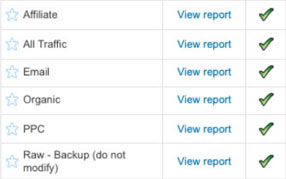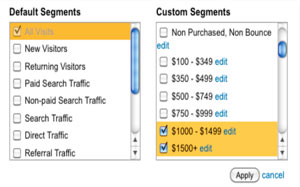While it's only been about 15 years since its creation (we won't argue here who created it), the internet has not only changed the way we live and work, it has also become the most critical marketing medium out there. Many people consider a business that doesn't have a website questionable, and recent statistics show that more than 90% of people considering doing business with you will check you out online before engaging in any meaningful interaction.
Consequently, having a website is a must, but just having a website because every business is supposed to have one is a waste of opportunity. What's the purpose of your website? Is it to generate leads and prospects, create sales, be a communications conduit for your current customers, or just to showcase your work? If you are uncertain, that's a problem. This article might help you discover a purpose for your website and measure how well you are achieving that purpose.
In addition to your website being a very powerful marketing tool, the ability to measure every click, every action that occurs on your website is a huge advantage. Moreover, using all that data to understand your customers, constantly improve your marketing efforts and spend your marketing budget more wisely are all too priceless. Taking a data-driven, goal oriented approach to online marketing is the way to go.
Following are two online marketing strategies that when combined get the best results:
Strategy 1: Identify/Integrate "Website Interactions"
When someone comes to your website, what do you want him or her to do? If you are uncertain, the chart below might help you understand the potential for "website interactions":
Purpose of Your Website
|
Possible "Website Interactions"
|
While this makes perfect sense to most people, it is amazing how many websites fail to offer "website interactions". If you don't sell online, then you need to get a little creative. Here are some examples of "website interactions" in a non-ecommerce situation…
- Sign up for newsletter
- Download a whitepaper
- Calculate something of value for the prospect
- Request valuable information
- Get a quote for a specific project or service
Each business has its own unique lead generation and sales process. Think about yours and be creative about what you can offer that's valuable to your prospects, and then integrate that offer into your website.
Strategy 2: Use Web Analytics to Measure and Improve "Website Interactions"
Now that you've integrated a compelling "website interaction", begin measuring how your marketing activities leading up to that interaction are working. This measurement process is broken down into two elements:
- Performance by marketing activity – how people get to your website
- Performance of your website – what people do once on your website
 Using web analytics data you can segment how people are getting to your website and how your various marketing initiatives are working. The image to the right is an example of separate analytics reports based on sources of website traffic. In this case, the firm is doing Affiliate marketing, email marketing, organic SEO and pay-per-click search marketing. By segmenting sources of traffic, one can analyze the effectiveness of each marketing initiative, determine how well each initiative is working and make adjustments to improve results. For firms making meaningful investments in online marketing and depending heavily on website performance, this kind of data can be invaluable.
Using web analytics data you can segment how people are getting to your website and how your various marketing initiatives are working. The image to the right is an example of separate analytics reports based on sources of website traffic. In this case, the firm is doing Affiliate marketing, email marketing, organic SEO and pay-per-click search marketing. By segmenting sources of traffic, one can analyze the effectiveness of each marketing initiative, determine how well each initiative is working and make adjustments to improve results. For firms making meaningful investments in online marketing and depending heavily on website performance, this kind of data can be invaluable.
 Taking the segmentation approach even further, websites involved in selling products and services online can benefit greatly from analytics data that identifies various product attributes. In the image to the left, the firm is tracking online consumer behavior based on price point. Understanding online visitor behavior based on the types of products and services you are selling provides opportunities to increase online conversions/sales and improve the productivity of search engine and social media marketing campaigns.
Taking the segmentation approach even further, websites involved in selling products and services online can benefit greatly from analytics data that identifies various product attributes. In the image to the left, the firm is tracking online consumer behavior based on price point. Understanding online visitor behavior based on the types of products and services you are selling provides opportunities to increase online conversions/sales and improve the productivity of search engine and social media marketing campaigns.
Effective marketing is often all about segmentation…segmenting your customers and providing them information that is unique to them. The same principle is true for improving return on your marketing investments, and the power of web analytics data can get you there.
In summary, don't have a website just to have a website – that's so 90's. Get creative about having compelling “website interactions” or calls-to-action. Then, get your measurement systems in place to track how well you are performing and how well your marketing investments are paying off.





Agree, disagree, or just have something to add?
Leave a comment below.